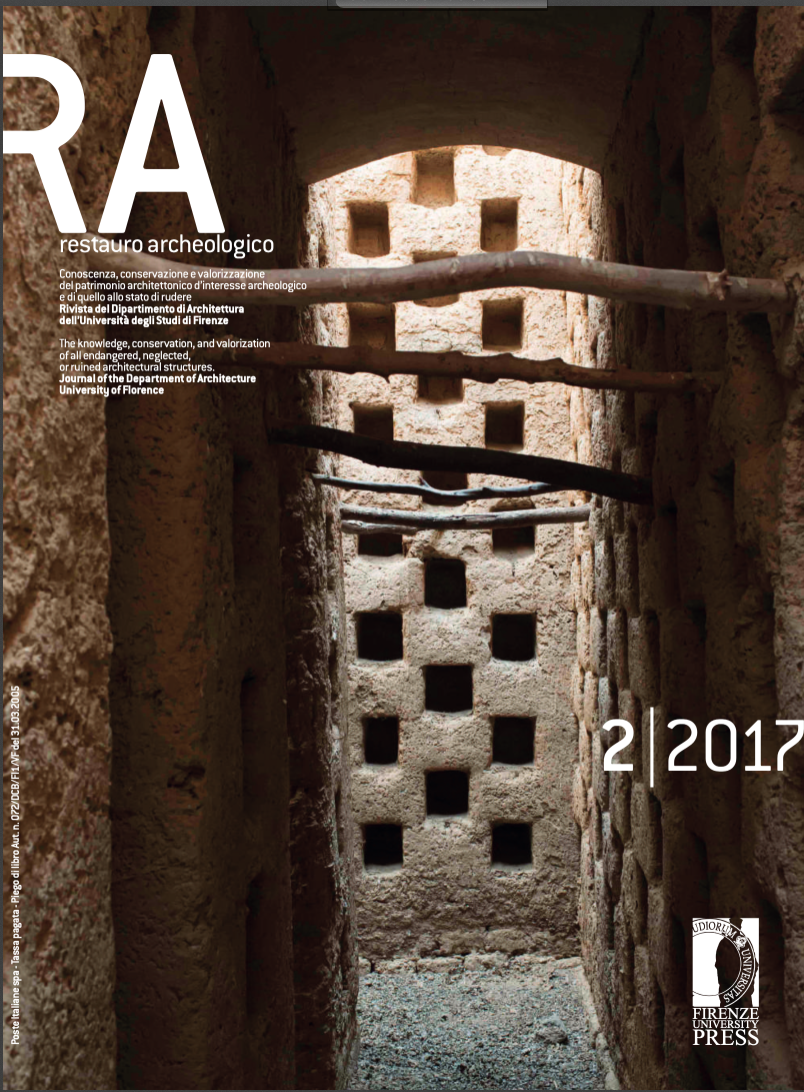Abstract
This article discusses the necessity to combine theoretical expectations and practical context in the case of logistically challenging projects, such as the multidisciplinary study of the Late Roman archaeological site of Umm al-Dabadib, located in an remote position at the outskirts of the Kharga Oasis, in Egypt’s Western Desert. This Italo-Egyptian project must conform and respond to rules and regulations from both countries, and faces the problem of identifying the most efficient methodologies to obtain a long-lasting result in an extremely complex environmental context. This article contains a description of the current trends in the management of mud-brick remains in the Egyptian desert environment, and a discussion on the methodology that the will be adopted at Umm al-Dabadib.


